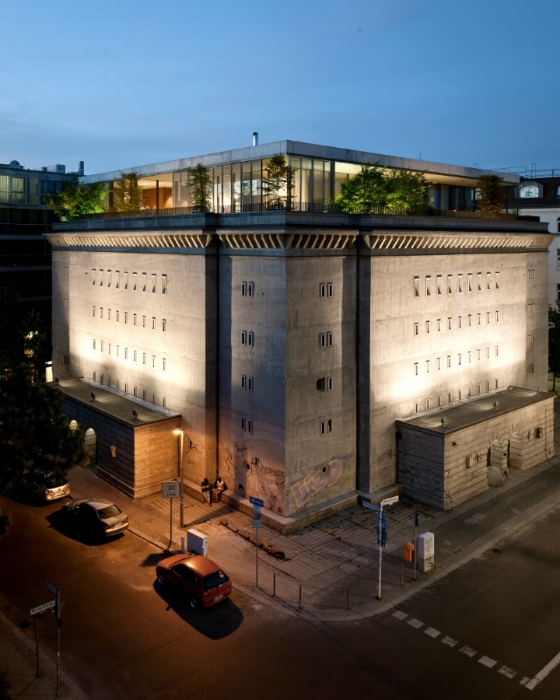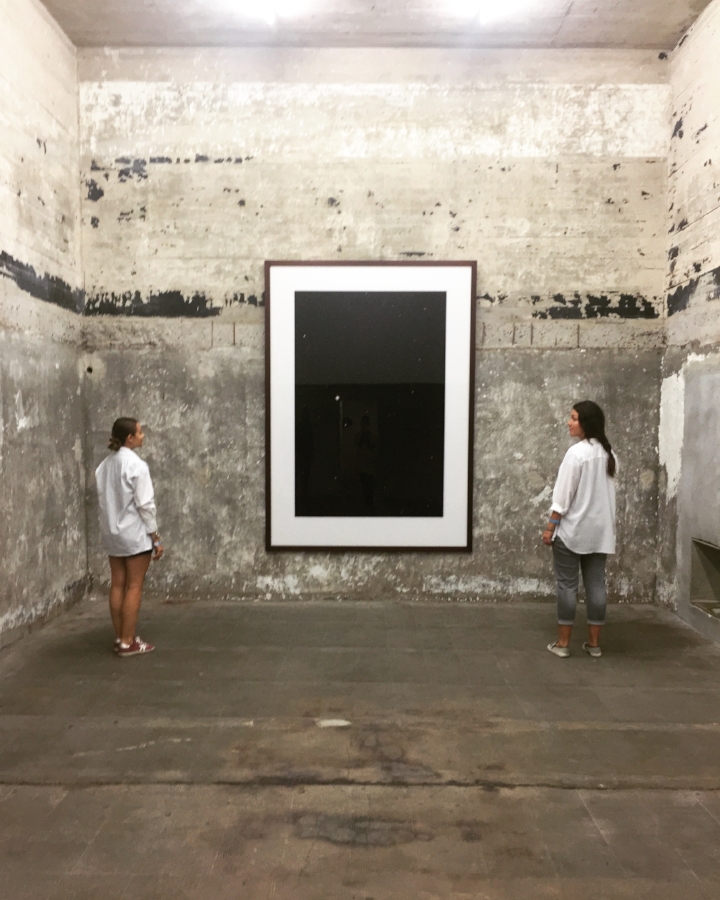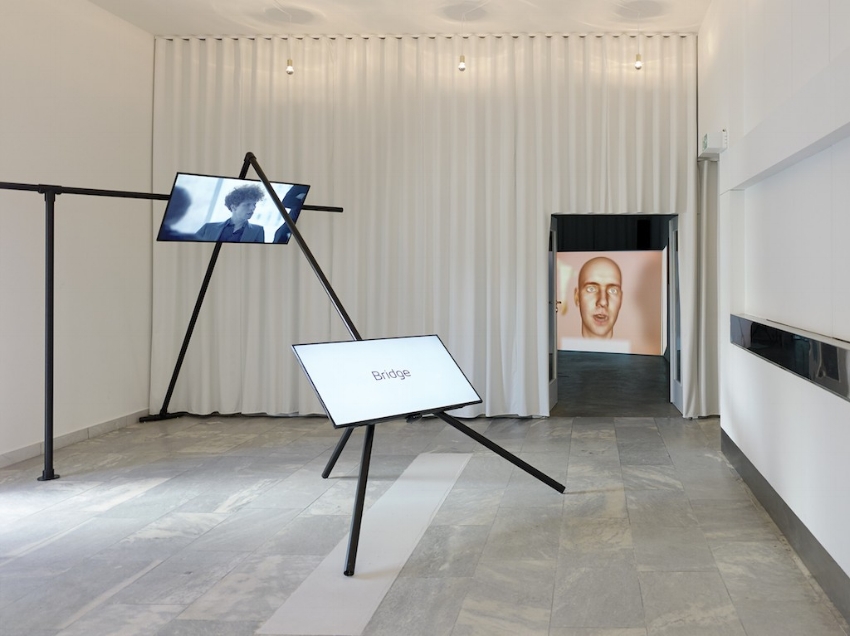Selection of Private Art Collections in Berlin
Berlin Art Week for its 5th year took place from 13-18 September, and, for the most part, at its focus was contemporary art. In addition to numerous exhibitions, extensive tours and talks program, the closing of the Berlin biennale and abc and positions art fairs, there was also the opportunity to visit some of the most impressive private art collections.
In the past years, many collectors moved out of the shadow and started to play a crucial role in the art circles. “With their decision and actions collectors are making a decisive contribution to developing the art system and the debate on contemporary visual culture.” (Andrea Bellini)
In Berlin exists association of BerlinCollectors - the joint web presence of Berlin's private contemporary art collections, which are open to the public.
We’ve selected 5 private collections that are definitely worth a visit during your next stay in Berlin.
Sammlung Hoffman
Portrait of Erika Hoffmann-Koenige ©Erika Hoffmann. Courtesy of Hoffmann Collection.
The Hoffmann Collection was one of the first collections to relocate to Berlin after the Wall came down. The collection features contemporary works of art in a range of media, including painting, sculpture, photography and video.
Collection is housed in a private apartment in a former industrial venue over two floors in a former factory building in the Sophie-Gips complex: Erika and Rolf Hoffmann have lived and worked here surrounded by the works of art they have been collecting for 40 years - and they've been opening their doors to the public since 1997. Since the death of her husband in 2001, Erika Hoffmann has continued to welcome people into her home and workspace every Saturday. Once a year, in July, Erika Hoffmann changes things around. Frank Stella whose vivid and striking work (from the Moby Dick series) is the only piece not to be moved during the annual re-hanging.
Chiharu Shiota, Inside - Outside, 2009, courtesy of Sammlung Hoffmann Collection
Many of the artists on display are local artists, like Katharina Grosse or Chiharu Shiota, who has been living and working in Berlin since 1996, but the exhibition displays works beyond the local scene and time. The Hoffmanns growing interest in eastern Europe and Asia led to the acquisition of works by Poland’s Katarzyna Kozyra, Hiroshi Sugimoto from Japan and China’s Fang Lijun. Among the many other artists whose work and ideas shape the collection are Jean-Michel Basquiat, Joseph Beuys, Felix Droese, Günther Förg, Isa Genzken, Nan Goldin, Felix Gonzalez-Torres, François Morellet, Arnulf Rainer and Gerhard Richter.
The collection feels particularly personal, driven as it is not by trends or populism but by private passions. Besides many great collected pieces, it is the peek into a private space and opportunity to meet Ms Hoffmann herself.
me Collectors Room
Collector Thomas Olbicht. Photograph by Jana Eber. Courtesy of ME Collectors Room Berlin/Stiftung Olbricht
Founded by art collector Thomas Olbricht, endocrinologist and heir to Germany’s Wella haircare estate, me Collectors Room Berlin /Stiftung Olbricht (Olbricht Foundation) is an exhibition space, which opened its doors on 1 May 2010. Besides showcasing Olbricht’s own collection, it also provides a platform for presenting other international private collections. The 'me' in its name stands for 'moving energies', which underlines the importance of being an open, adventurous and private room that tries to foster excitement for the vivid art world.
The Olbricht collection encompasses several thousand art works from the early 16th century all the way to the most recent contemporary art and hosts a number of great names, such as Gerhard Richter, Thomas Demand, Marlene Dumas, Cindy Sherman, Jonas Burgert and Eric Fischl.
Ali Banisadr, Foreign Lands, 2015 from 'My Abstract World' exhibition, Courtesy of the artist
The two-story building itself was designed specifically for the needs of the me Collectors Room Berlin by the architectural firm Düttmann + Kleymann in conjunction with Thomas Olbricht.
Current show on view ‘My Abstract World’ brings together a selection of Olbricht’s favourites, drawn from his collection of 350 abstract works by ninety different artists. To list a few name of international artists, from established figures like Gerhard Richter, Bernard Frize and Katharina Grosse to representatives of a younger generation, including Ali Banisadr, Paul Fägerskiöld and Parker Ito.
Installation view of 'My Abatract World' exhibition at me Collectors Room. (Image courtesy of The Art Partners)
Christian and Karen Boros. Photography by Wolfgang Stahr. Courtesy of the Boros Collection.
The collection of Christian Boros and his wife Karen Lohmann became the world widely known in 2008 when they opened it to the public in a bunker in Mitte, a central borough of Berlin. It consists of around 500 works in total by artists such as Damian Hirst, Olafur Eliasson, Elizabeth Peyton, Wolfgang Tillmans, Anselm Reyle, Manfred Pernice, Tobias Rehberger, John Bock, Wilhelm Sasnal and Michel Majerus.
Initial idea was to find a building that had a different function previously, such as a hospital, a swimming pool, or a school. The choice was made towards a bunker, which was constructed by Nazi Germany in 1943 to shelter up to 3,000 Reichsbahn train passengers.
View on the bunker and penthouse, where collectors live. Photograph by Wolfgang Stahr.
After extensive renovation, converted bunker hides an incredible treasure trove of contemporary art – sculpture, spatial installations, light and performance-based work of international standing. With the art collection located downstairs, the family live at the top of the bunker with glass windows overlooking the Berlin skyline. Many of the exhibited works were envisioned and installed by the artists themselves, and some of them were created especially for the bunker.
Walking through this artificially lighted 3,000-m2five-storey building, with its concrete walls, ceilings and floors, remnants of graffiti from the 90s, ‘Rauchen Verboten’ wartime signs, and old ventilation shafts and wounds of the bullet holes outside creates a truly unique experience.
Dahn Vo, We the people (detail), 2011. (Image courtesy of The Art Partners)
During their first 4-years show more than 120,000 ‘guests’ have toured the original exhibition and more than 7,500 tours were led in 11 languages. The new exhibition opened in 2012, titled “Sammlung Boros #2,” features 130 works by 23 artists.
The Boros Collection can only be viewed on the weekends as part of a guided tour, which you’ll need to book in advance via the website.
Thomas Ruff, Stern 13 h 18m/ 60°, 1992. (Image courtesy of The Art Partners)
Désiré Feuerle. Photograph by Mark G. Courtesy of The Feuerle Collection
Feuerle Collection. © John Pawson
It's a collection of international contemporary and South-east Asian art and Chinese design. Opened in April 2016, space hosted the 9th Berlin Biennale place between June 4 and September 18., the official grand opening of the Feuerle Collection will be celebrated in October 2016. As well as Boros Collection, the Feuerle Collection is housed in a World War II-era telecommunications bunker, which has been refurbished by the renowned British architect John Pawson. The museum aims to provoke a dialogue between works of different cultures and eras.
Installation view of Feuerle collection. Photograph by Nic Tenwiggenhorn
The collection juxtaposes 7th-13th century Kmer sculptures in stone, bronze, and wood as well as imperial Chinese furniture spanning from the Han to the Qing dynasty (200 BC—18th century) with contemporary works by the likes of Cristina Iglesias, Anish Kapoor, Zeng Fanzhi, and James Lee Byars.
Julia Stoschek Collection’ satellite
Collector Julia Stoschek, photograph by dpa
Founded in 2007 in Dusseldorf, this private collection established itself to be at the international cutting edge of time-based media art in the contemporary field. The German collector and patron Julia Stoschek launched a satellite gallery in Berlin to coincide with the city’s ninth biennial.
The collection juxtaposes installations, videos, photographs, paintings and sculptures, which stretches across two exhibition floors. Each year a new exhibition takes place and presents a different perspective of the Julia Stoschek Collection to the public. The collection also collaborates with other international institutions, curators and high-calibre artists and underlines art-historical references within the collection. Some notable artists are Marina Abramović, Peter Fischli & David Weiss or Tony Oursler.
Welt am Draht exhibition, ©Julia Stoschek Collection
WELT AM DRAHT is the title of the first presentation in the new temporary jsc’ satellite at Leipziger Strasse 60 in Berlin’s Mitte district. In line with the JULIA STOSCHEK COLLECTION’s insistence that it be contemporary, the exhibition is devoted to media-based pieces that address the influences and changes in our social reality, identity and environment since digitalisation.
The ambitious launch show includes 38 works by 20 artists, from more established figures such as Neil Beloufa to sought-after young names such as Jon Rafman, starting with large video installations, sculptural works, a performance, a monumental live simulation through to a purpose-made piece by artist collective K-HOLE.
Next year Stoschek will celebrate the 10th anniversary of the Düsseldorf space.














